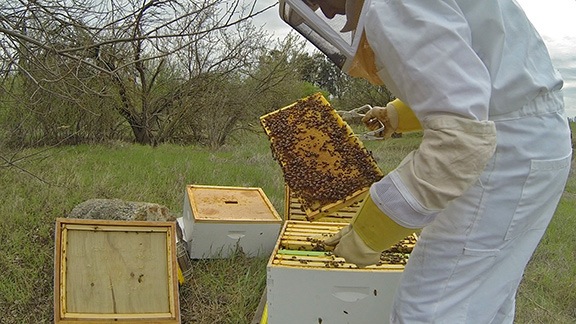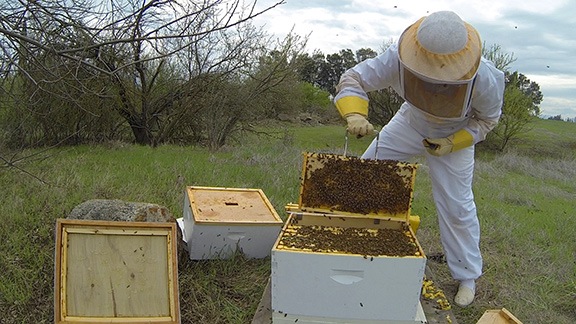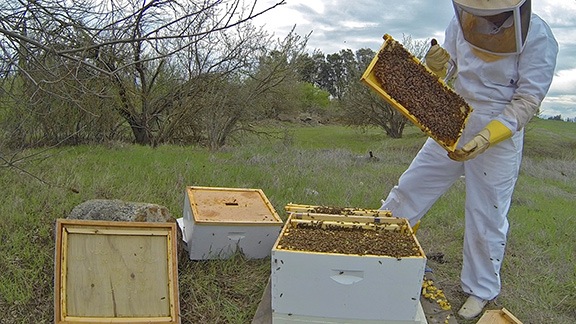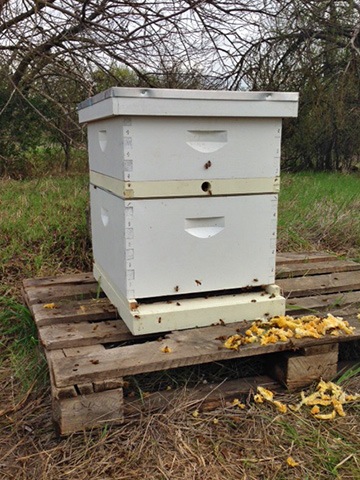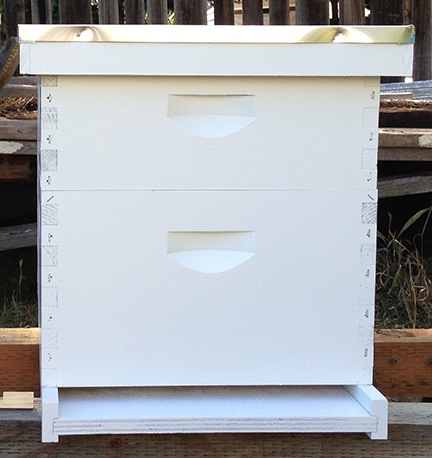When verifying the reality of a delusion gets expensive — and makes the deluded people look like fools.
I have to blog this. It’s the funniest thing that has happened since my divorce turned ugly last August.
The Back Story
As many readers know, I’ve been planning to buy and build a home on a lot in Malaga, WA. What some readers may not know is that back in July, when I thought there might be a chance of reconciliation with my estranged husband, I took him to see the lot I wanted to buy.
I envisioned us building a summer home there where I was making 80% of my income during three months. I envisioned him opening the bicycle repair shop he’d talked about on more than one occasion, possibly with bike rentals, along the nearby 11-mile bike trail in Wenatchee. I envisioned us living back in our paid-for Arizona home during the winter, taking it easy with a semi-retired lifestyle that would leave him plenty of time to fly his plane and build skills for his retirement career as a certified flight instructor.
I really thought that if he saw the land and the view that he’d envision the same life I saw for us. A life that didn’t include him being a slave to pay for a condo he didn’t need and I hated. A life with new, fun challenges in a beautiful place that wasn’t overrun with cheap retirees and rabid conservatives. A life with lots of recreational opportunities and a sunny future.
I didn’t realize then that he was already under the thumb of a desperate old woman who had seduced him with 30-year-old lingerie photos. I didn’t realize that he had stopped thinking for himself and was only doing what his new mommy told him to do.
That’s the back story: I found a 10-acre view lot in Malaga and I showed it to my future ex-husband, foolishly thinking he’d like it, too. Then I waited until the divorce was finalized and I got my settlement to buy it.
Fast Forward, May 7, 2013
My husband and his girlfriend/mommy managed to drag the divorce process out to April 2013. Other factors dragged it into May. On May 7, we had the first of two half-day sessions in front of a judge.
I was on the stand most of that time. During the cross-examination, their lawyer — I can’t really call him my husband’s lawyer since his girlfriend/mommy has been giving most orders to him since at least November — asked me a curious question:
“Isn’t it true that you own a home in Washington state?”
The question really took me by surprise. Me own a home in Washington? If that was the case, then why would I be living in Wickenburg, AZ, in a home filled with memories of a life I’d lived with the man I loved? The home I’d been locked out of by the man who obviously now hated me and had been harassing me since my return in September?
I answered truthfully: “No.”
He pressed on: “Isn’t it true that you have been living most of the past six months in Washington?”
I might have laughed. “No,” I replied. Other than a few short trips to Washington and California and Florida, I’d spent most of the past six months stuck in Wickenburg. Packing.
Afterwards, I talked about that question with my lawyer, family, and friends. It had seemed so out of left field. Did they honestly think I was living in Washington? If so, my testimony, under oath, should set them straight.
At least that’s what I thought.
Another Court Date
After another delay, we had our final appearance before the judge on May 31. My future ex-husband testified. Although most of his testimony was irrelevant and complete waste of time, he did manage to convince me that he’s become quite a liar. Or he’s more delusional than I thought.
My favorite piece of fiction: That during the six years of our marriage, he’d helped me with my helicopter business at least 100 times. That’s quite a feat for someone trapped in a 9 to 5 grind who uses his vacation time to visit family in New York and spends most of his other free time watching television. I was able to get back on the stand and insert a dose of reality for the judge’s consideration.
When we left the court, we all let out a sigh of relief. Now that it was in the judge’s hands, it was finally over. They’d finally stop harassing me.
At least that’s what I thought.
The Abuse Continues
The first indication that I was wrong came the day after the court appearance. He transferred the the balance of our joint checking account, which has always been equally contributed to and used for household expenses, to his personal checking account.
It’s not the money that bothered me. Frankly, it isn’t worth spending time worrying about the $445 that was my share.
What bothered me was the fact that the account was being used to pay our sole joint liability: the home equity line of credit. When the automatic payment came through, the payment would bounce and the account would be charged $35.
I knew this for a fact because I’d been watching my husband’s old checking account, which I could see when I logged into Bank of America. He’d drained that, too, but had stupidly forgotten to stop automatic payments from that account. Since September, he had bounced five checks and had been hit with a $35 fee for each one. (I knew because I still got low balance alerts for that account with all the others I monitored. That’s how I found out immediately about his withdrawal from the house account.) Some people just can’t manage their own finances. Good thing I was in charge of paying the bills all those years.
So by removing the money from that account, he’d set us up for bank fees and a possible hit to our credit scores for late payment of a loan.
And let’s not ignore the fact that he had no legal right to remove any funds from that account without the permission of the court unless it was to pay for house expenses. This money was true joint funds used for a specific purpose. Half the money was mine. He was stealing from me.
What a freaking idiot.
Amazing that it took him less than 24 hours to prove again how stupid he could be.
And Now for the Funny Part
On June 5 — still less than a week from that final court date — I was sitting at an outdoor restaurant, having lunch. I’d just spent the morning traipsing all over that 10-acre lot in Malaga with two surveyors, identifying property corners and the northern property line. I wanted to make sure I could visualize what my future 10 acre lot looked like. I wanted to see what land I had to work with.
(I was very pleased with the results. The lot appears about three times the size I’d visualized, working from incorrect corner markers.)
As I sat eating lunch, I checked my email. And that’s when I saw the latest bit of nonsense from my husband’s side of the divorce: They were insisting that I had already purchased the lot. In fact, they insisted that I had closed in January and that I was already developing it!
I really didn’t have any idea where they’d gotten these specific details. Although the email communication I’d been forwarded — from my husband’s mommy/girlfriend to their lawyer to my lawyer — mentioned tweets, I can’t remember having ever tweeted anything about having bought the land. Why? Well, I’d never bought it. So how could they have information about a closing date? And what made them think I’d started developing the land?
An earlier email message answered one of those questions. Apparently, back in early April 2013, they’d hired an “investigator” to snoop around the property I planned to buy. He’d photographed an RV (not mine) and cargo trailer (not mine) on a lot with a view a lot like the one I’d soon have. He’d provided details about septic system takeouts and obvious earthwork. The investigator’s report and some of the photos were included in the email forwarded from my husband to his lawyer to my lawyer. This was their proof that I’d lied in court — that I owned a home in Washington and was building on it!
Click play to cue soundtrack for this hilarity. (Many thanks to Facebook friend Dean for offering up this very appropriate music track.)
The only problem is, the photos showed the lot next to the one I was planning to buy.
You cannot imagine how hard I laughed when I realized this. My husband and his girlfriend/mommy had spent hundreds of dollars hiring an “investigator” to photograph my future neighbor’s property!
How they screwed this up so badly is beyond me. Who gave the investigator the address? Where did it come from? That has to be a story in itself.
How Delusions Become Costly
You realize that to find out what property I own in Malaga, all a person has to do is go to the Chelan County Assessor’s Office website and do a parcel search for my last name. If my husband or his girlfriend/mommy or their lawyer or the investigator had spent about 5 minutes doing this, they would have concluded that I didn’t own any land in Malaga or anywhere else in Chelan country. And if they thought they got the county wrong, they could have done the same for Douglas and Grant countries.
Did Dr. Tyson know I’d written about delusional people when he tweeted this more than 3 years later?
But the trouble is, they weren’t interested in reality. They were interested in producing evidence to back up their delusion.
They were convinced that I owned land in Washington. That was their delusion.
Maybe they did try a property search. They would have come up empty. But in their deluded minds, they knew I had property in Washington. They would have made excuses for why the tax rolls didn’t reflect their idea of reality. Perhaps they hadn’t been updated lately. Perhaps I’d bought the land in someone else’s name. Perhaps the Chelan County Assessor’s office was conspiring against them to hide the truth about me and my vast Washington real estate holdings.
Hey, anything is possible when you don’t rely on facts.
So they hired an “investigator” and told him where to take photos. Maybe they told him approximately where the lot was and he did some “investigating,” coming up with the only lot on that side of the road that was being developed. Having an RV on it must have sealed the deal that it was my lot, even though the tax rolls said it was owned by someone else.
Never mind that the RV on the lot wasn’t the one I owned, the one he claimed in court to have installed $5,000 to $9,000 of improvements in. (Another lie.) It wasn’t even the same make and model. And even though the “investigator” took photos of the Washington state license plates on the RV and the cargo trailer, no one had the idea to run those plates and see who they were registered to? If they had, they’d see that they were registered to someone other than me. Probably the people who owned the lot.
But that would shatter the delusion. Can’t do that. Delusional people only want evidence to support their delusions.
And apparently, they’re wiling to pay to get that evidence.
What Now?
Well, I’ve informed all parties that they investigated the wrong lot. I made it quite clear how amusing I think this is and how incredibly stupid I think my husband, his girlfriend/mommy, their lawyer, and the “investigator” are. I haven’t heard anything more about it.
But I suspect they don’t believe me. After all, they are delusional. I said in court, under oath, that I did not own a home in Washington. I said this on May 7, 2013. I did not lie in court.
But they obviously didn’t believe I was telling the truth then, under oath. So why would they believe me now?
